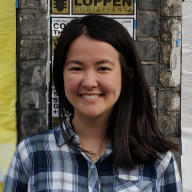
Angelina Li
Bio
Hi! I'm a generalist on the executive office, where I work on M&E, data, and other projects. I used to work on the EA Global team at CEA, and before that I did economic consulting. I was born and raised in Hong Kong 🇭🇰.
Think I'm making a mistake? Want to give me feedback? Here's my admonymous. You can also give feedback for me directly to my manager, Oscar Howie.
Posts 14
Comments212
I really enjoyed your EAG talk, and am glad you're sharing it here! This is the first I've heard of the "ecologically inert" strategy, and I found it inspiring to understand how some WAW researchers tackle cluelessness head on.
I find your section on justification standards provocative in a valuable way. Thank you!
If we're still early on in the name change process then the cost to change to a better name is basically nothing.
I think the point where the "cost to change to a better name is basically nothing" has long past, at the point where they have published a brand new set of digital assets, done journalist interviews, etc. :)
(I am expecting the new name is going to stick around!)
This is so exciting to hear about, thank you for sharing!!
Are you willing to share what your rough fundraising target is? I can't tell if you are aiming to raise $60K, or if your room for more funding is larger than that. No worries if you don't want to share on a public forum and would prefer potential donors reach out for more information, I understand.
Wow thank you! I'm sending this to someone I know. Appreciate it!
Something that would make this post more helpful for me: If you had to pick 1-3 resources for someone to start reading about cluelessness (say: someone who is vaguely worried about cluelessness but hasn't invested deeply in building their own models yet / could use a refresher), where would you choose?
(No pressure of course, this is already very helpful :) )
Nice, I remembered when you first posted on the Forum about this: very cool that the project is alive still! If it felt low cost to share, I feel curious about how it's going, but also no pressure :)

A rule of thumb that I follow for generating data visualizations: One story = one graph
Some made up stories and solutions:
Sharing communication advice a few colleagues have found helpful.